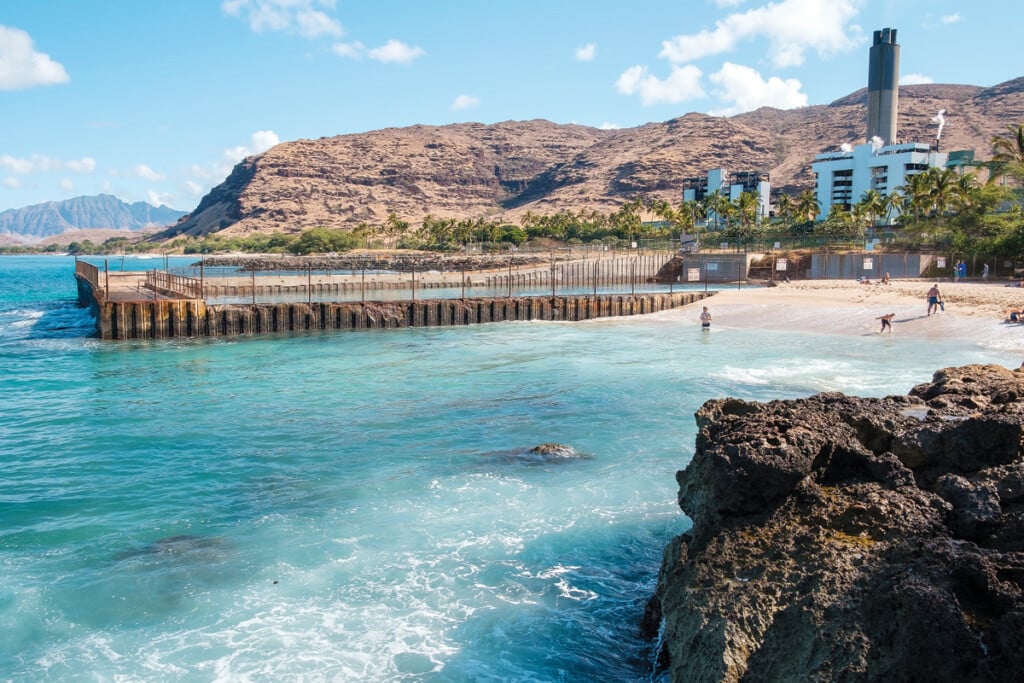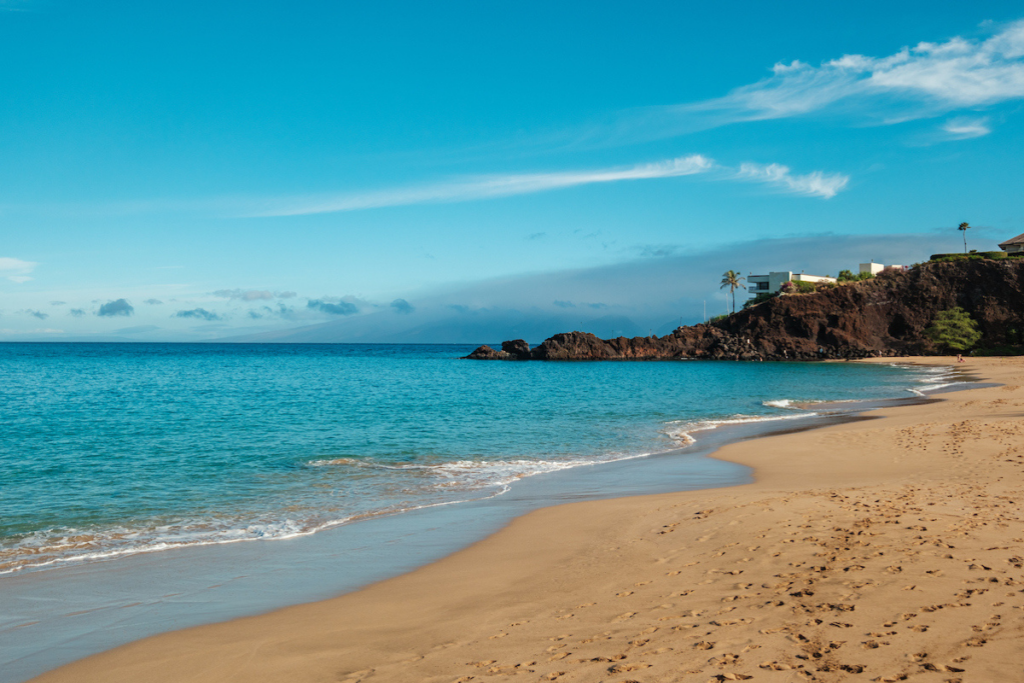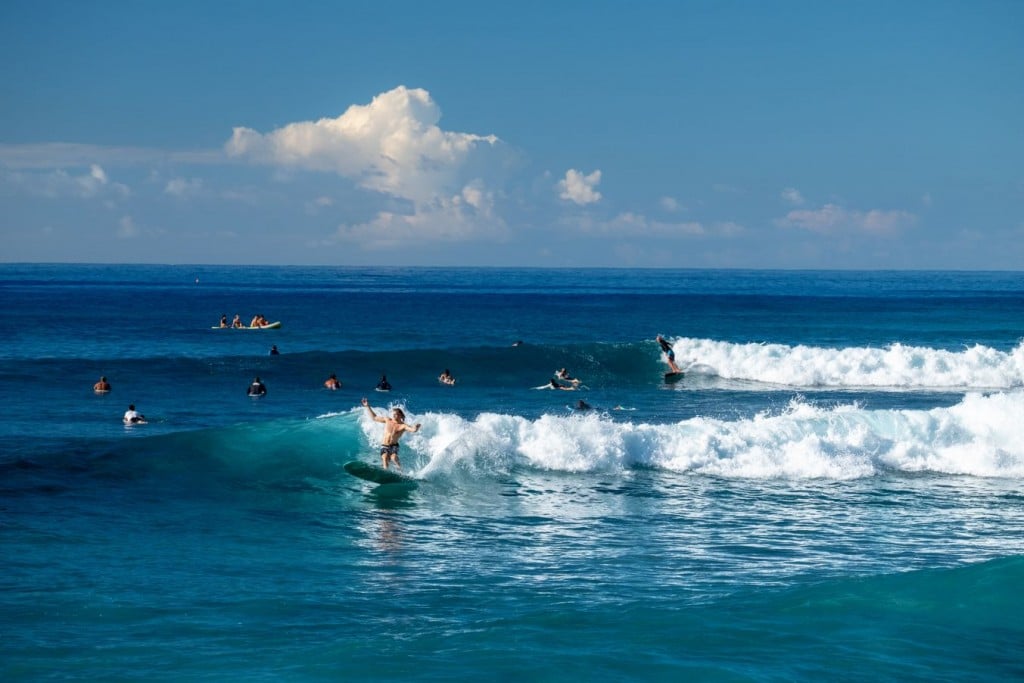Snorkeling at this Spot on Oʻahu is an Electric Experience
Nicknamed Electric Beach, Kahe Point offers extraordinary snorkeling on O‘ahu’s West Side.

As schools of shiny silver fish dart by, a creature much larger catches my eye. A spotted eagle ray glides gracefully beneath me, the first one I’ve seen in the wild, its pectoral fins fluttering like wings. I’m in the ocean off Kahe Point, and I’m captivated.
The waters surrounding the Hawaiian Islands are home to a colorful collection of marine life. Diving beneath the ocean’s surface is like entering a strange realm full of vibrant coral reef formations and otherworldly sea creatures. As you swim among schools of fish, you might encounter friendly honu (sea turtles), elegant eagle rays and playful dolphins.
The abundance of marine life found here, along with its clear, warm waters, make this beach in West O‘ahu a popular destination for snorkeling.
The island of O‘ahu is dotted with world-class snorkeling spots. Hanauma Bay, located on the southeastern coast, boasts pristine waters teeming with a diverse variety of marine life. But reservations are required at the nature preserve and there’s a $25 fee for non-Hawai‘i residents—making for a potentially expensive beach day. On the North Shore, Shark’s Cove is another great snorkeling spot, with tide pools and underwater caves. However, it’s seasonal; during the winter, the North Shore’s legendary swells can make conditions there dangerous and snorkeling impossible.

This snorkeling spot is a bit of a hidden gem off Farrington Highway.
Photo: Aaron K. Yoshino
As you head toward the West Side, Kahe Point—about 27 miles west of Waikīkī—is a bit of a hidden gem off Farrington Highway. You wouldn’t guess it from the road, but for most of the year, the beach has everything you need for exciting snorkeling. From playful marine life and clear visibility in the ocean to bathrooms and showers on land, it’s a fantastic escape from busier beaches on the island.
As the beach at Kahe Point has grown in popularity among locals and visitors, concerns for safety also increased. In response the city installed a lifeguard tower in 2023, and now lifeguards are on duty from 9 a.m. to 5:30 p.m. Despite that, snorkeling at Kahe Point is recommended for strong swimmers only. Within the first month of the new tower, lifeguards rescued seven people at Kahe Point, according to the Honolulu Emergency Services Department.
Locals have given Kahe Point the nickname Electric Beach because of the nearby power plant, which emits clean water used to cool the plant into the ocean. That warm water attracts a flurry of sea creatures close to shore, and it’s this marine life that lures swimmers, snorkelers and divers to the beach.
This morning, I’m meeting my friend, Steve, for a couple of hours of snorkeling. After arriving at the beach’s dirt parking lot, we check the ocean conditions. The water’s calm and glassy. Ideal.
We head down to the beach, which is just a small stretch of sand, but it makes entering the water easy. On the beach are other swimmers and groups of scuba divers getting ready for a morning in the water.

The beach is just a small stretch of sand, but it makes entering the water easy.
Photo: Aaron K. Yoshino
After Steve and I gear up, we swim out. Some days the shore break can be rough, so we are prepared. On other days, you need to pay more attention to other swimmers entering and leaving the water since it’s a small beach.
The reef is about 150 yards from shore. Steve and I are avid swimmers, having crossed miles in the ocean together, so it doesn’t take long to reach the reef. Once we do, we’re surrounded by schools of glittering fish.
We swim with them for a while before making our way south toward Ko ‘Olina to explore other reef systems. The water is crystal clear as we swim above the corals; some of them look like giant heads of cauliflower, others have protruding red limbs. We also come across stretches of sand marked with intricate patterns created by the currents.
As Steve and I take a break in the water, he tells me to listen closely; there are dolphins nearby. We look toward the horizon and see a whole pod of them leaping into the air, two or three at a time.

Snorkeling at Kahe Point is recommended for strong swimmers only.
Photo: Aaron K. Yoshino
Exploring new environments expands people’s perspectives—even if it’s in the place they call home. For me, being in the ocean is a reminder that we share this planet with a beautiful array of creatures. We might not see them every day, but we’re lucky when we do.
Hawai‘i’s unique biodiversity spans from mauka to makai (mountain to sea), and it’s all interconnected: What we do on the land impacts our ocean and its inhabitants.
After we see the dolphins and the spotted eagle ray, Steve and I start to swim back to the beach. It may seem obvious, but it’s important to remember: The distance you swim out is the distance you have to swim back. On the return trip, though, you’re likely to be tired, and there could be a current, too, so keep that in mind.
On our way back to shore, Steve calls to me and points to a honu. In Hawai‘i, the green sea turtle is considered a sign of good luck, which is fitting. I’m feeling especially lucky to have spent the morning at Kahe Point.
Tips for Snorkeling at Kahe Point:
- Snorkeling at Kahe Point is recommended for strong swimmers only.
- Always swim in the ocean with a buddy.
- Snorkeling conditions are usually best in the morning.
- Check ocean conditions before swimming out. You can always ask the lifeguards on duty.
- Don’t touch any marine life, including coral.
This story was originally published in our SPRING/SUMMER 2025 issue, which you can buy here. Better yet, subscribe and get HAWAIʻI Magazine delivered to right to your mailbox.
Grace Maeda is the editor of HAWAIʻI Magazine.

